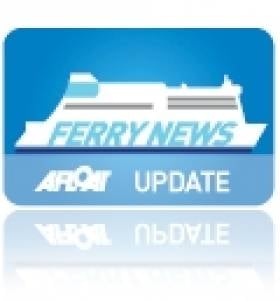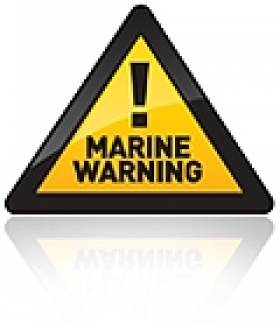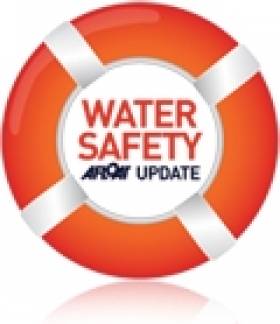Displaying items by tag: Marine Notice
Marine Notice: Casualty or Incident Reporting
#MarineNotice - The latest Marine Notice from the Department of Transport, Tourism and Sport (DTTAS) reminds all mariners of the obligation to report marine casualties to the appropriate authorities in the event of an incident.
The notice refers to the official report by the Marine Casualty Investigation Board (MCIB) into the grounding of the cargo ship Pantanal (more details) at Rossaveal on 31 March 2011, which can be read in full HERE.
The report recommends that mariners be reminded of the European Communities (Vessel Traffic Monitoring and Information System) Regulations 2010, as amended, which require the operator, agent or master of a ship in Irish waters to immediately report to the Irish Coast Guard any incident affecting the safety of the ship, or any incident liable to lead to pollution of the waters around Ireland or any other EU member state.
Full details are include within Marine Notice No 3 of 2013, a PDF of which is available to read or download HERE.
Marine Notice: Liability of Carriers of Passengers by Sea in the Event of Accidents
#MarineNotice - The latest Marine Notice from the Department of Transport, Tourism and Sport (DTTAS) draws attention to EU regulations pertaining to the liability of carriers of passengers by sea in the event of accidents.
The new EU Regulation 392/2009 came into force last week on 31 December 2012, incorporating provisions of the 2002 protocol to the Athens Convention relating to the carriage of passengers and their luggage by sea, which introduced compulsory insurance to cover passengers on ships such as passenger ferries, and covers the liability of the carrier in respect of passengers, their luggage and vehicles.
Full details of the new regulations are available in Marine Notice No 2 of 2013 via the department website HERE.
Lock Gate Maintenance, 'Head of River' Race on Shannon Navigation
#InlandWaterways - Waterways Ireland wishes to advise masters and owners on the Shannon Navigation that work will commence on the lock gates at Tarmonbarry Lock next Monday 14 January.
These works will be on-going for a period of approximately eight weeks until Thursday 14 March 2013. An alternative passage maybe accessed via the Camlin river loop upstream of Tarmonbarry Lock and the Clondra Canal downstream of the lock.
The cross-border body for Ireland's inland waterways also advises that the Carrick-on-Shannon Rowing Club's Head of River race will take place on Saturday 23 February from 9am till 5pm.
Masters of vessels are requested to proceed at slow speed and with minimum wash when passing this stretch of the navigation and to heed any advice or instructions issued by the regatta officials.
Meanwhile, Waterways Ireland has published a general marine notice reminding masters and owners of their responsibilities when navigating Ireland's rivers, lakes and canals.
The notice includes information on vessel registration, canal permits, public berthing, smart cards for service payments, speed restrictions, water safety and other important details for anyone boating in Ireland North and South.
Marine Notice: Revised Medical and Energy Efficiency Certificates
#MarineNotice - The latest Marine Notices from the Department of Transport, Tourism and Sport (DTTAS) advise seafarers and vessel owners of revised medical and energy efficiency certificates that come into force this coming Tuesday 1 January 2013.
Marine Notice No 65 of 2012 contains details of the revised Seafarer Medical Certificate - Form 3 (ENG11) which is being introduced by the DTTAS to ensure continued improvements to seafarer safety.
The redesigned form incorporates additional information on a seafarer's medical fitness, and will be issued by approved doctors from 1 January onwards. All current certificates held by seafarers will remain valid till their expiry dates.
Meanwhile, Marine Notice No 66 of 2012 has full information on the new International Energy Efficiency Certificate which will be required for all ships of 400 GT and over.
The new certificate is based on amendments to MARPOL Annex VI relating to regulation on energy efficiency on board ships.
From 1 January all new build ships will be provided with an IEE Certificate subject to fulfilling relevant criteria. It will only be valid in combination with the Energy Efficience Design Index (EEDI) indicated on the cert, and the Ship Energy Efficiency Management Plan (SEEMP).
Existing ships will be provided with an IEE Certificate at the first intermediate or renewal survey of the International Air Pollution Prevention (IAPP) Certificate.
Marine Notice: New EU Regulations for Ferry and Boat Passengers
#FERRY NEWS - The latest Marine Notice from the Department of Transport, Tourism and Sport (DTTAS) highlights the rights of ferry and boat passengers within the European Union under new legislation set to apply from 18 December 2012.
The European Union (Rights of Passengers when Travelling by Sea and Inland Waterway) Regulations 2012 give full effect to Regulation (EU) No 1177/2010, which has the objective of ensuring "a high level of protection for passengers using waterborne transport anywhere in the European Union by establishing certain rights and a minimum quality of service across the EU.
"It provides ship passengers with enhanced rights and includes provisions on non-discrimination and assistance for persons with disabilities and reduced mobility, rights relating to the provision of information to all passengers before and during a journey, assistance to passengers in the event of delays and, in certain circumstances, compensation for delays and cancellation of journeys."
The main elements of the new regulations are summarised in Marine Notice No 63 of 2012, a PDF of which is available to read or download HERE.
Meanwhile, the DTTAS is also reminding shipowners, masters and officers of their obligations as regards keeping a continuous navigational watch while at anchor.
Full details of obligations under the STCW Convention are included in Marine Notice No 62 of 2012, a PDF of which is available to read or download HERE.
Marine Notice: Works on Quay Wall at North Wall Quay
#MARINE NOTICE - The latest Marine Notice (No 61 of 2012) from the Department of Transport, Tourism and Sport (DTTAS) advises that J Murphy & Sons, on behalf of Dublin City Council, will construct a 600mm emergency overflow pipe from Spencer Dock Pump Station through the Liffey quay wall at North Wall Quay/New Wapping Street Junction, Dublin 1.
The work will commence on or around 23 November 2012 and will last approximately two weeks, weather permitting. The location of the works relating to maritime positions is:
Latitude 53° 20’ 49.431 N / Longitude 006° 14’ 08.171 W
The works area will be marked by red buoys. These buoys will be an appropriate distance from the works area and will clearly identify the scaffold when submerged due to high tide. The cantilever beams will project 1.5 metres out from the quay wall.
The only vessel used during the works will be a rescue boat which will be moored at the works location for its duration.
#MARINE NOTICE - The latest Marine Notice from the Department of Transport, Tourism & Sport (DTTAS) reminds all fishing vessel owners, agents, skippers and crew to service their launching and release gear for survival craft on their vessels.
Marine Notice No 60 of 2012 points to the amendments to Chapter III of the SOLAS Convention as outlined in Marine Notice No 37 of 2009 regarding "the operational readiness, maintenance and inspections of launching appliances and on-load release gear for survival craft and rescue boats on board vessels.
"The safety and operational readiness of such equipment fitted on-board fishing vessels is of critical importance and the Department wishes to advise that surveyors from the Marine Survey Office will verify that the requirements for servicing... have been followed as appropriate, during the safety surveys of fishing vessels."
Marine Notice: Cable Laying in Irish Sea Between Wales and Portmarnock
#MARINE WARNING - The latest Marine Notice from the Department of Transport, Tourism and Sport (DTTAS) advises mariners of cable laying operations in the Irish Sea from next week onwards.
The cable laying operations between Wales and Portmarnock Beach in north Co Dublin will commence on Thursday 25 October for approximately 14 days, subject to weather conditions. The works will be undertaken from the C/S Resolute (Call sign V7FF3) supported by the M/V Coastal Discovery (Call sign PBUZ).
Both vessels will display appropriate shapes and lights during the operations, and will keep a listening watch on VHF Channel 16 at all times.
Mariners are particularly advised to note that small craft will also be supporting the main operations vessels in the immediate area of Portmarnock Beach. These craft will have VHF communications, and their movements will be co-ordinated by the main vessels.
In addition, divers will be operating between Portmarnock Beach and the cable laying vessel within the approved corridor for these work and to a maximum distance of 6.5km from the shore.
All vessels, particularly those engaged in fishing, are requested to give all vessels involved in these operations a wide berth.
Full details of co-ordinates are included in Marine Notice No 59 of 2012, a PDF of which is available to read or download HERE.
Marine Notice: Alcohol and Drugs Onboard Pleasure Craft
#WATER SAFETY - The Department of Transport, Tourism and Sport (DTTAS) has published a Marine Notice addressed to all pleasure and recreational craft owners, masters and users to remind the public of the law in relation to being under the influence of alcohol and/or drugs when operating or being on board a vessel in Irish waters.
The 2010 Annual Report of the Marine Casualty Investigation Board (MCIB) highlighted the dangers inherent in excessive alcohol consumption while on board or operating a vessel and emphasised the relevant legislation under the Pleasure Craft (Personal Flotation Devices and Operation) (Safety) Regulations.
While operating a pleasure craft, being towed or on board any floating vessel, it is against the law to be under the influence of alcohol or drugs or any combination of drugs or of drugs and alcohol to such an extent as to be incapable of having proper control of the craft.
It is also against the law to consume alcohol or drugs in circumstances which could affect the safety of others on board or others using Irish waters, or create a disturbance on board or be a nuisance to others using Irish waters.
It is a requirement for the master or owner of a pleasure craft to take all reasonable steps to ensure that persons comply with the regulations.
The Maritime Safety Act 2005 also contains a range of provisions relating to the prohibition on operating a vessel in Irish waters while under the influence of alcohol or drugs, the breaking of which can lead to fines of up to €5,000 and up to three months' imprisonment.
Full details are outlined in Marine Notice No 56 of 2012, a PDF of which is available to read or download HERE.
#MARINE NOTICE - The latest Marine Notice from the Department of Transport, Tourism and Sport (DTTAS) draws mariners' attention to the official report on the sinking of the fishing boat Ainmire and its recommendations for safety on board all fishing vessels.
As reported in September last year on Afloat.ie, the report by the Marine Casualty Investigation Board found that a breach in the engine compartment caused the Ainmire to take on water and sink off the coast of Scotland in April 2011.
The report concluded that the failure of a sea water cooling pipe in the engine room was the most likely cause of the flooding, and noted that the pipework had not been renewed during the life of the vessel.
Investigators also noted that the bilge pump was located under the floor plates in the engine room as was this inoperable when the water level rose in the compartment.
Marine Notice No 58 of 2012 - a PDF of which is available to read and download HERE - reminds fishing vessel operators that large sea-water inlets in engine rooms make their boats vulnerable to severe flooding if they fail.
It is recommended that these pipes should be checked for corrosion every year, especially around the welded joint at the hull. Ultrasonic thickness testing of the pipework should also be considered.
Moreover, such pipework can be eroded quickly by stray currents, so electrical equipment should be checked regularly, while the location of bilge pumps in the engine room should be carefully considered

































































